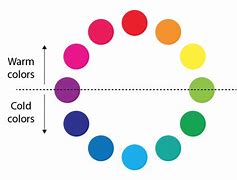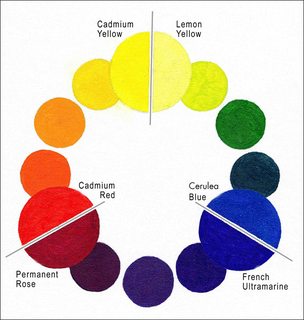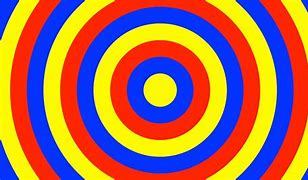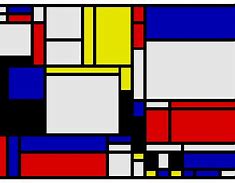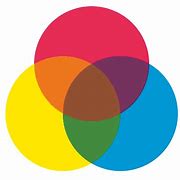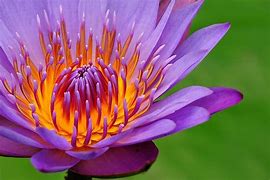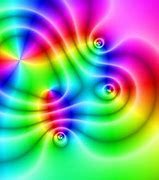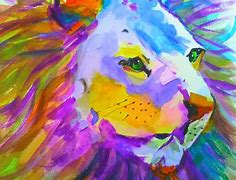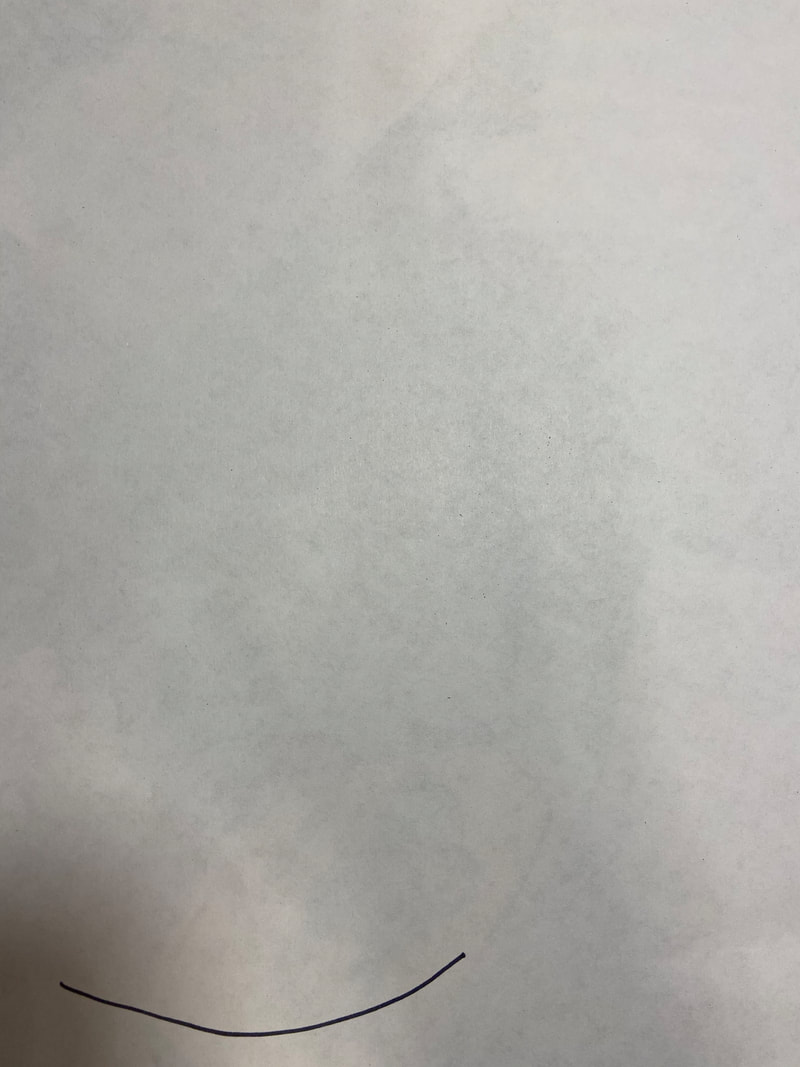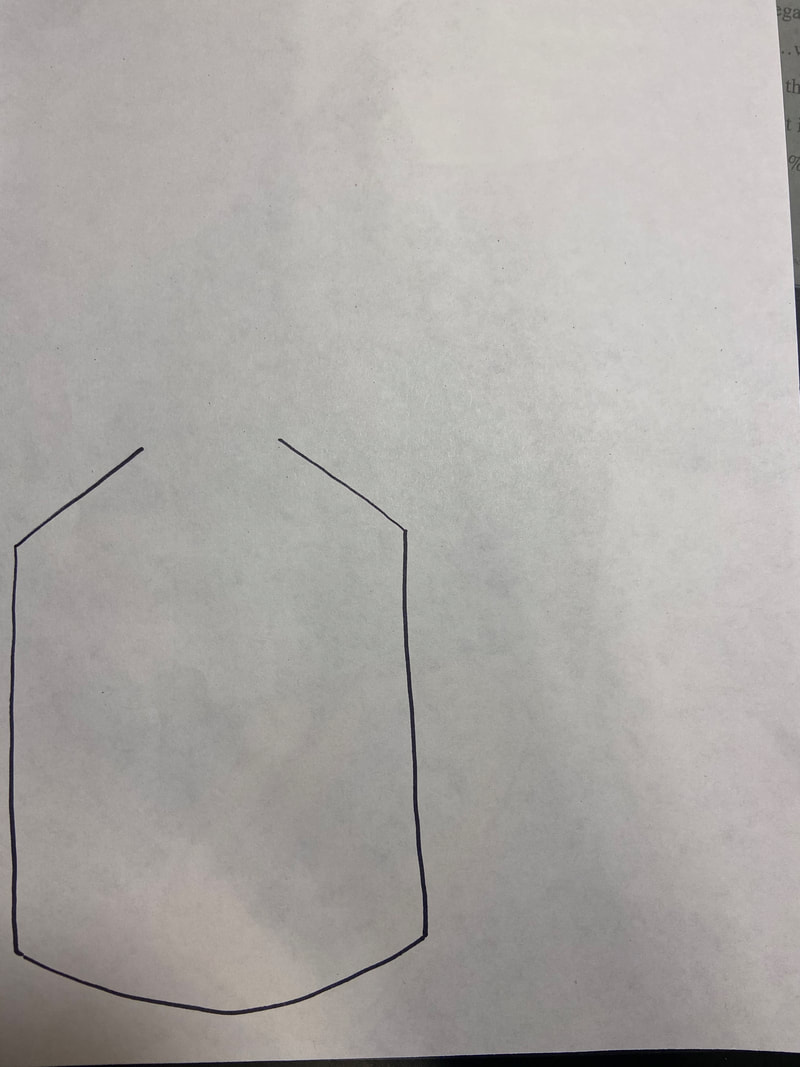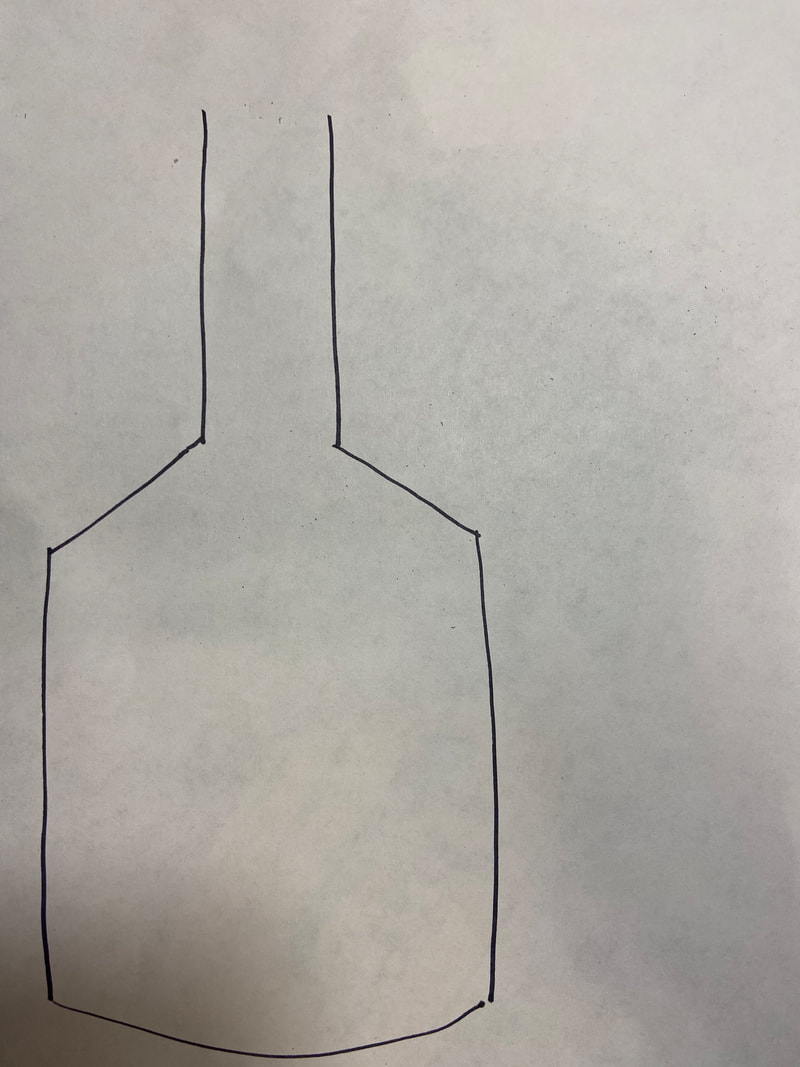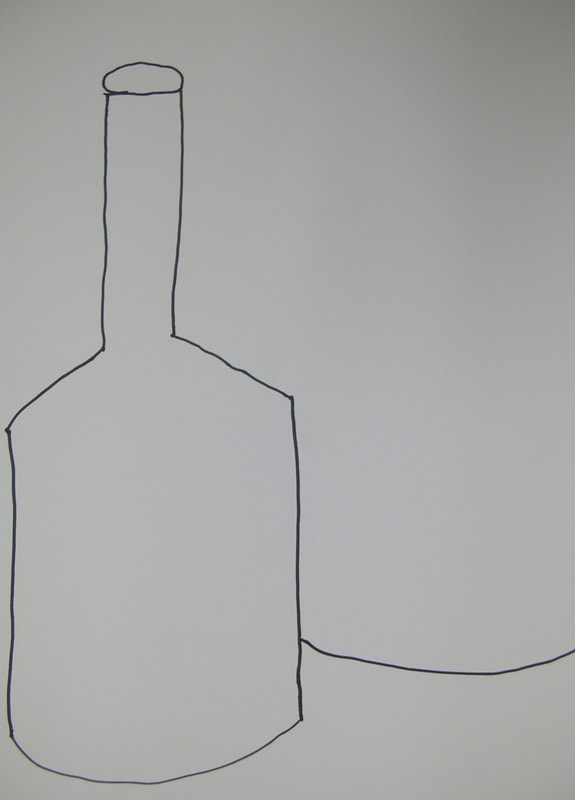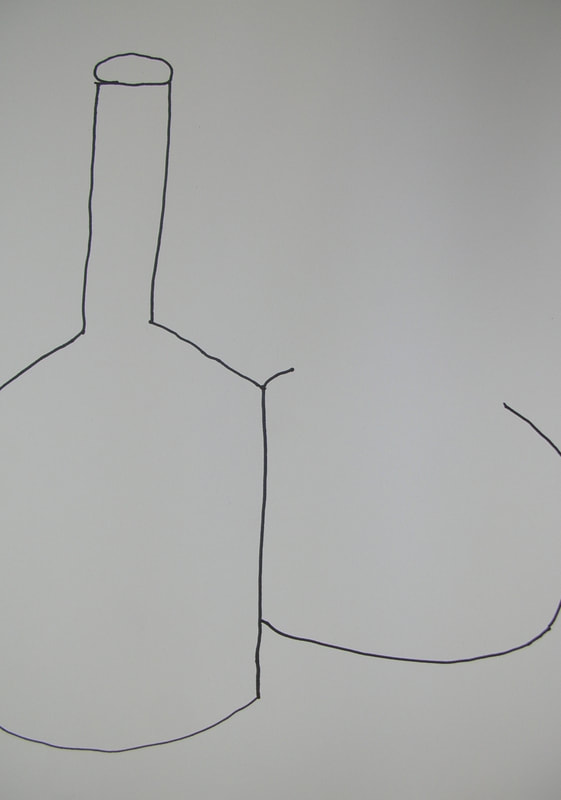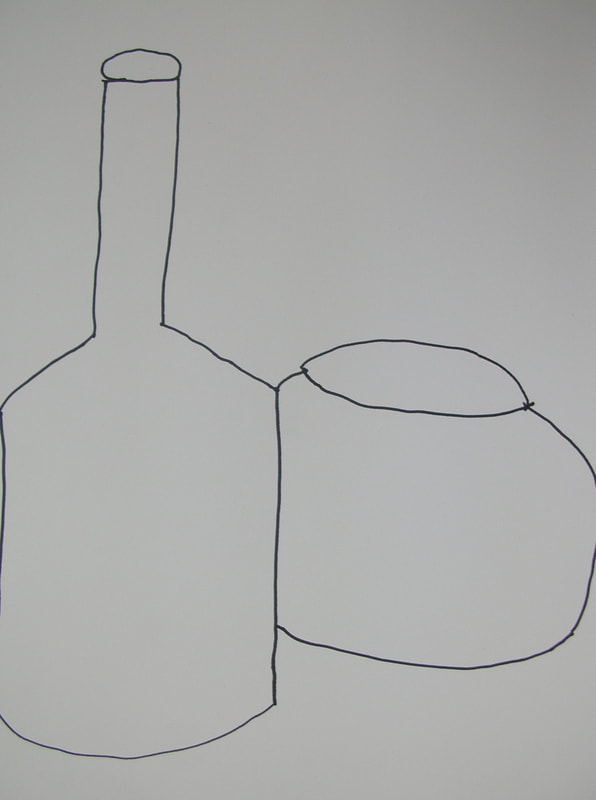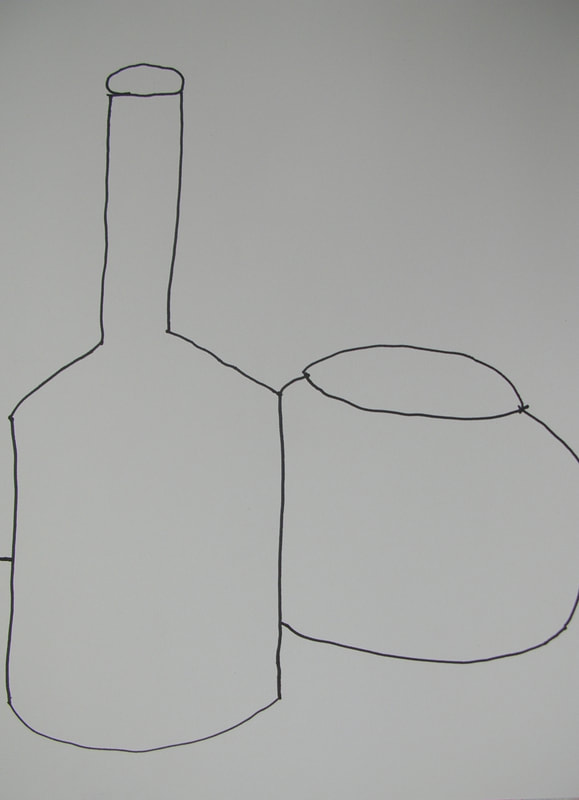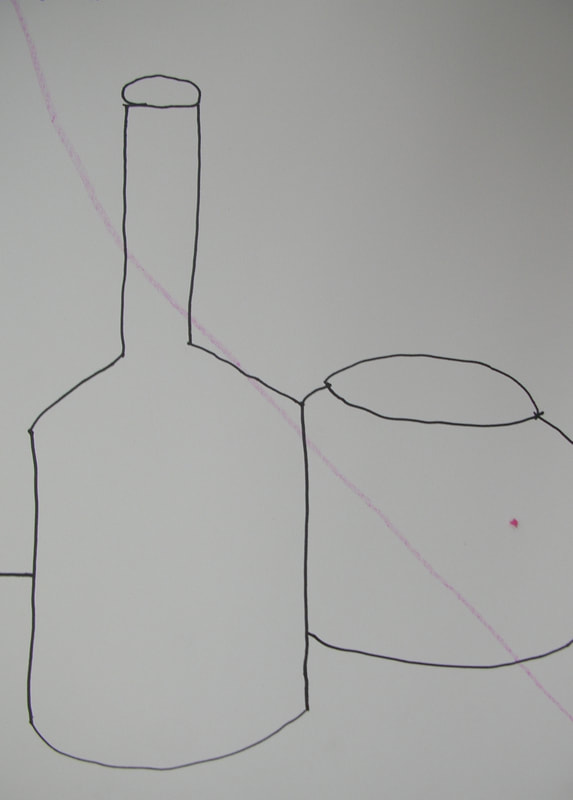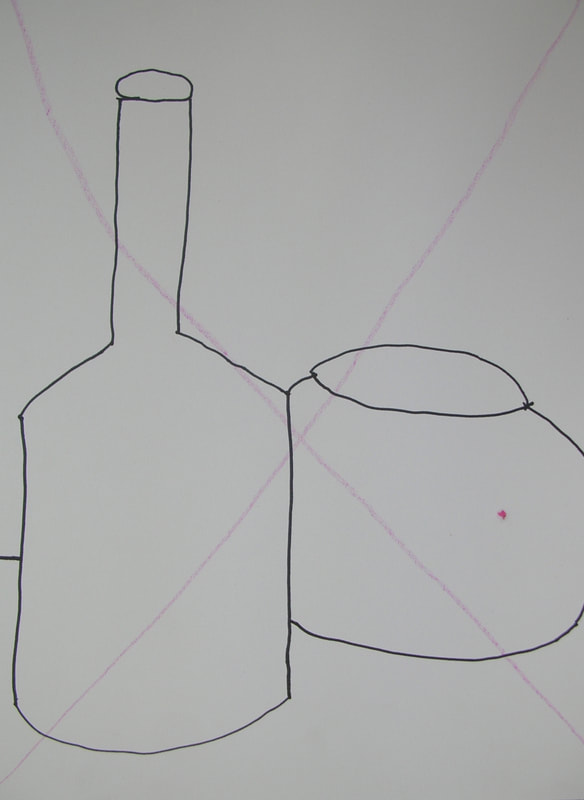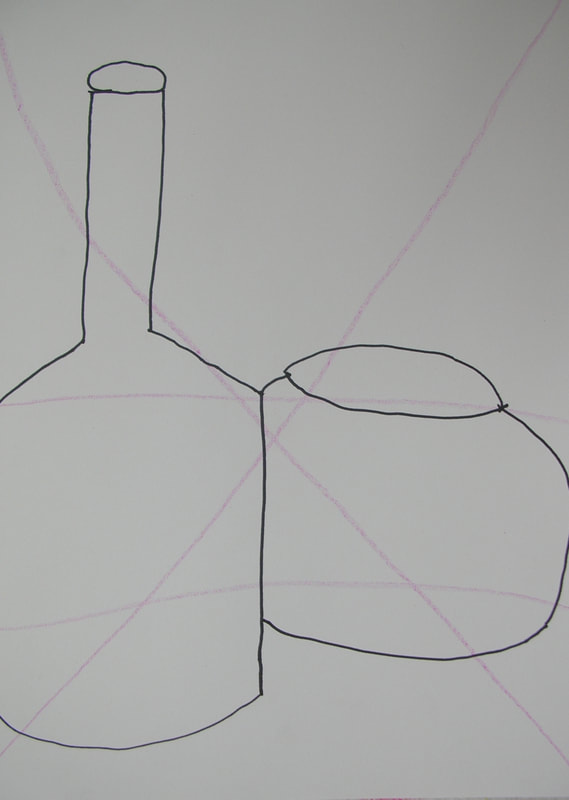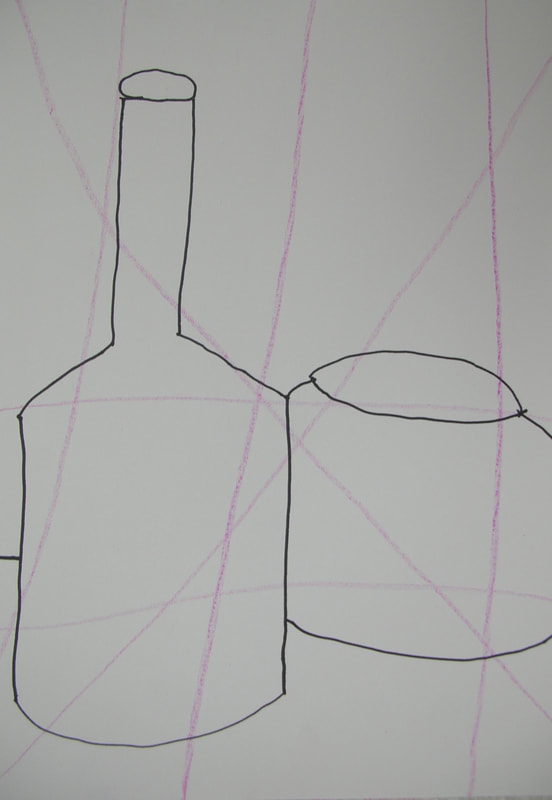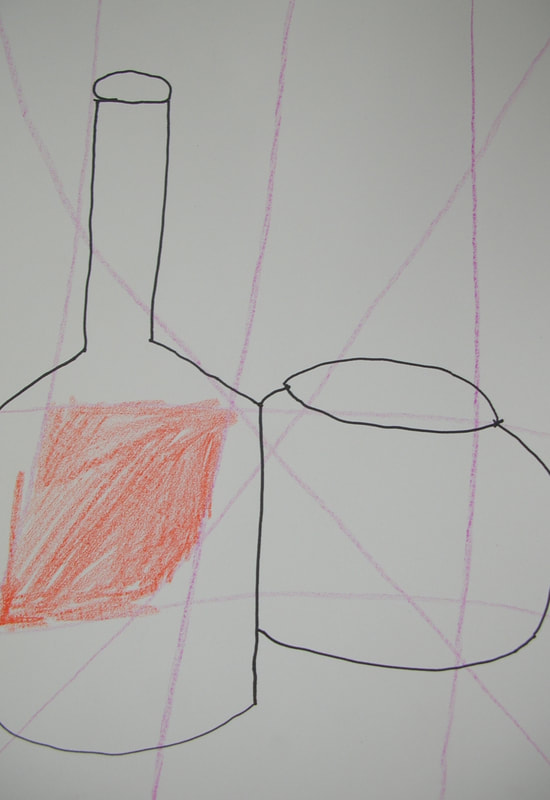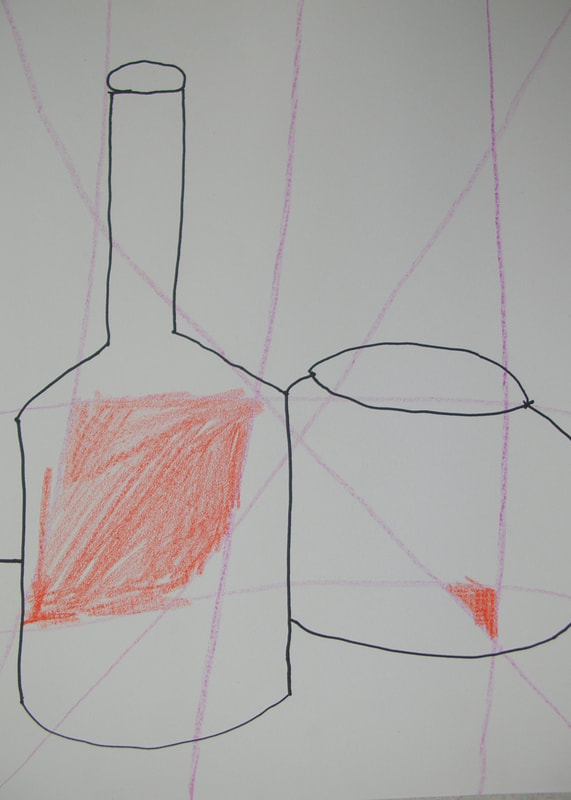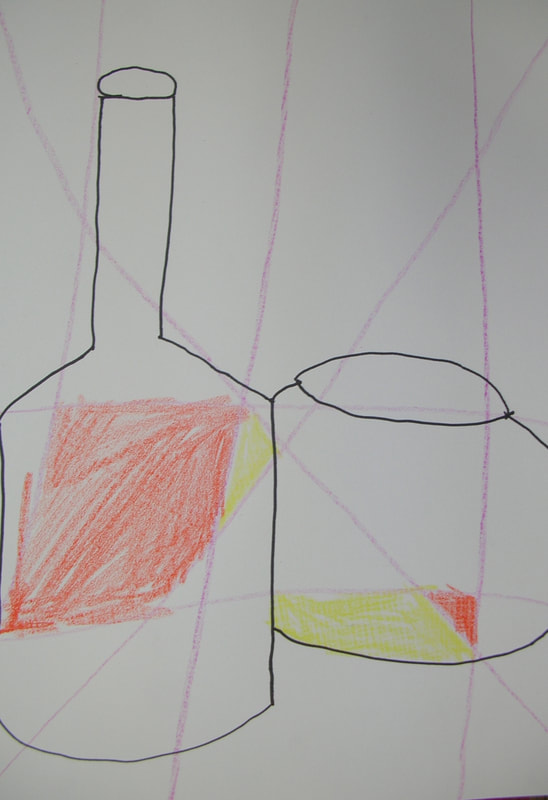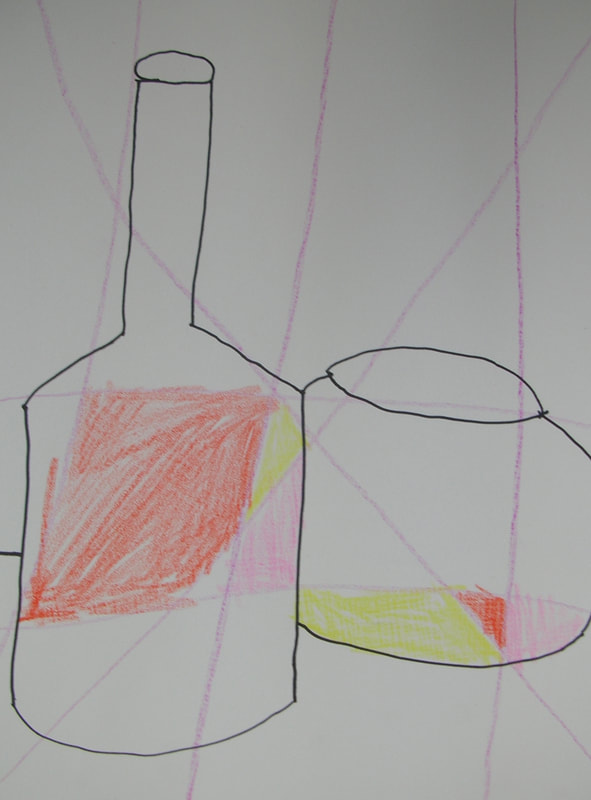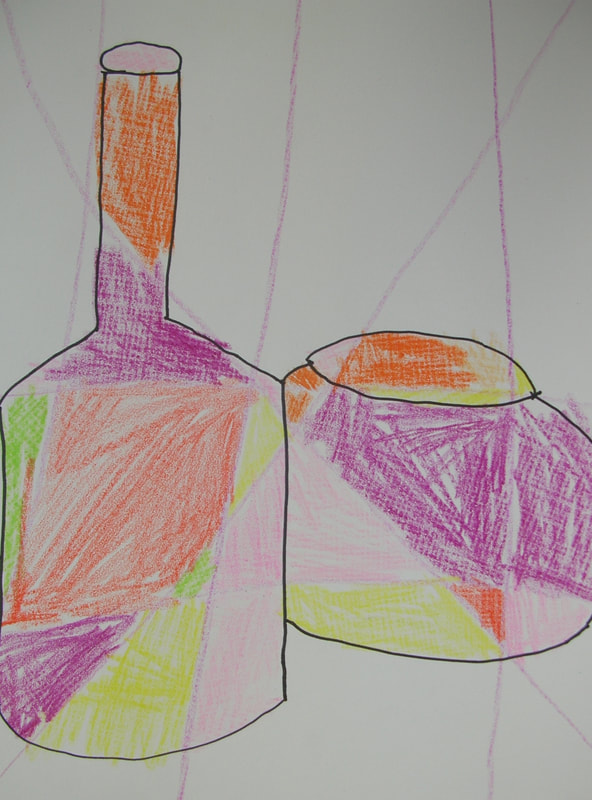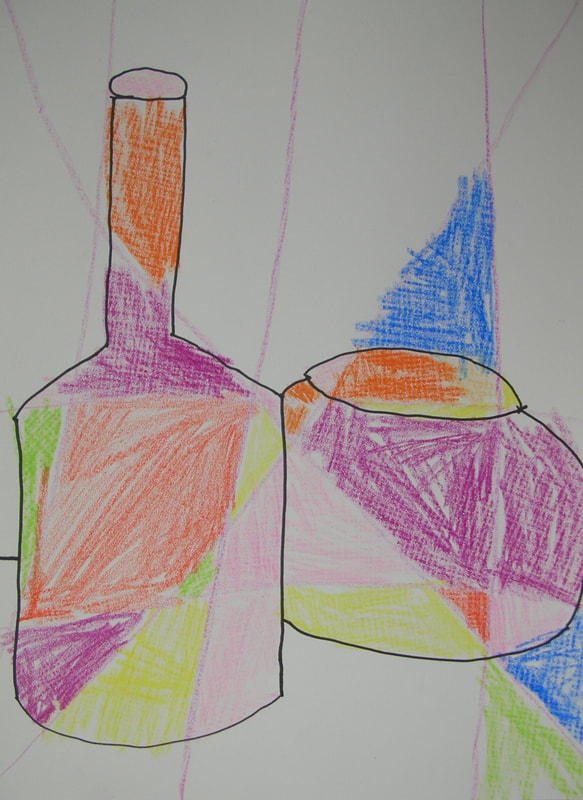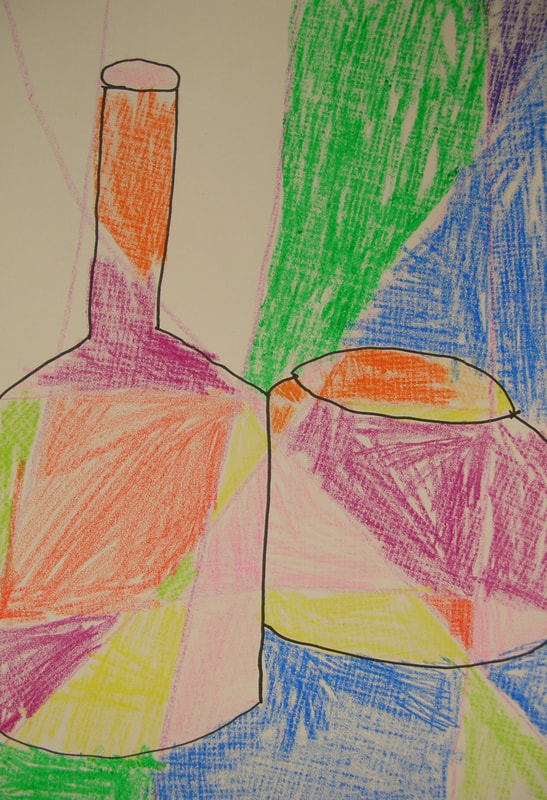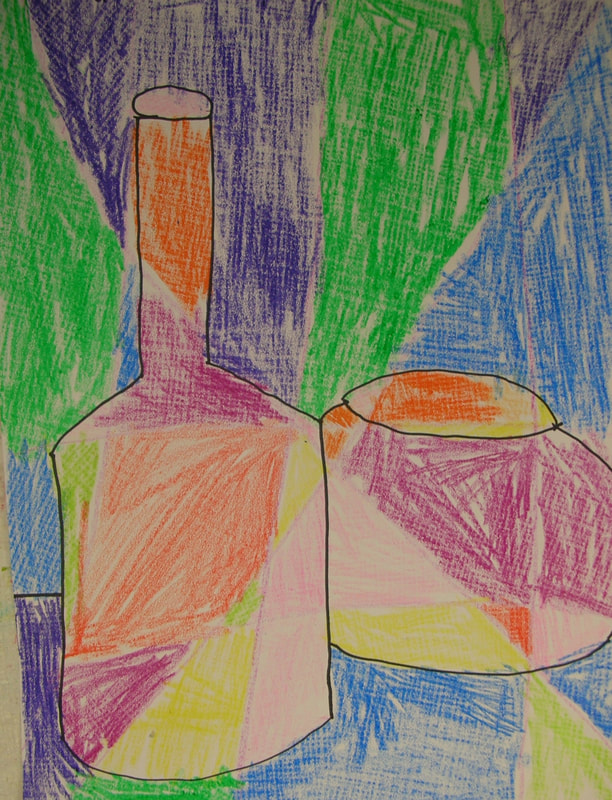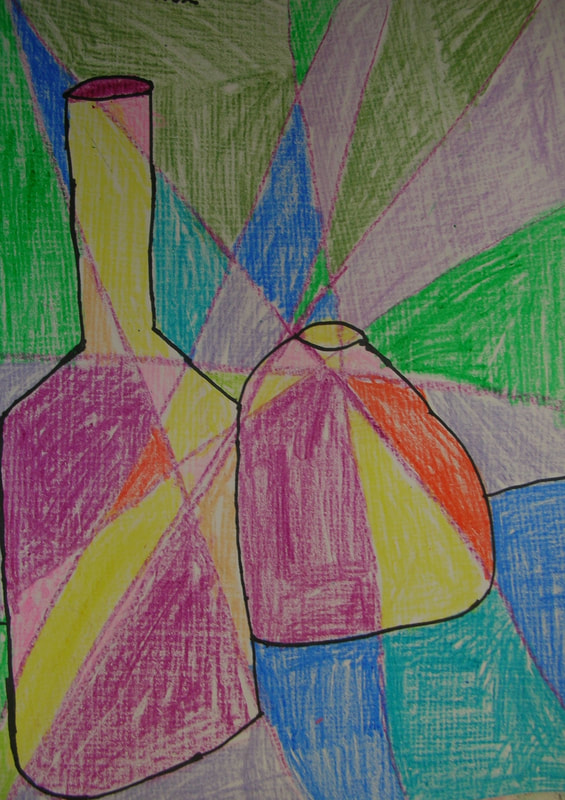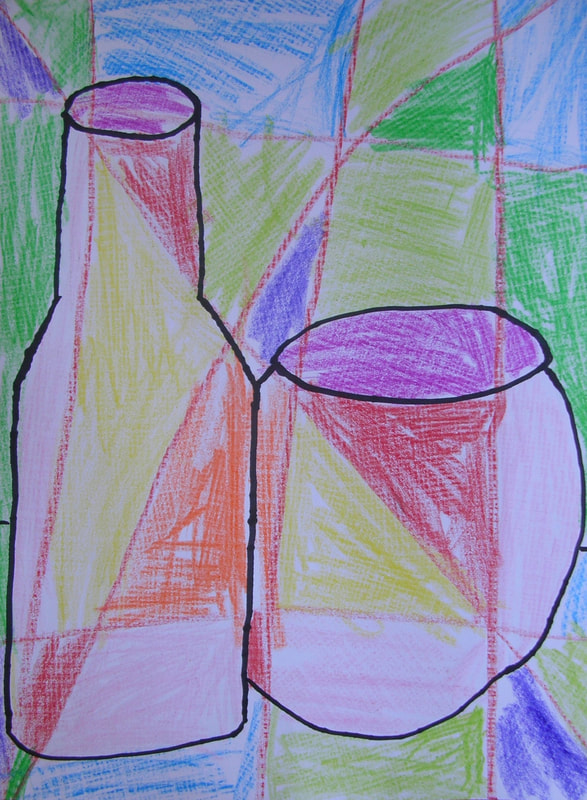Color wheel project - mixing colors for kids
|
The following is a Kindergarten art lesson on using crayons or oil pastels to create still life illustration using warm + cool colors, primary + secondary colors with lines.
Scroll down to find:
|
cool + warm colors
|
Warm colors are;
|
Cool colors are;
|
primary colors
secondary colors
|
When 2 primary colors are mixed together, a secondary color is created, just like magic! Red + Yellow = Orange, Blue + Yellow = Green, Red + Blue + Violet. Orange, Green, + Violet are the Secondary colors. On a Color Wheel, like seen above, the secondary closure surrounded by the primary colors. Placement on the color wheel can help you to understand how secondary colors are made. Look who is next to secondary color on both sides. The 2 colors that make it are!
|
step-by-step instructions
objective
Students will learn how to illustrate, step-by-step, a simple bottle still life, while learning what a still life is. Students will also learn of primary + secondary colors, also cool + warm colors colors.
materials
- drawing paper 9"x12" is standard size
- pencil
- eraser
- crayons or oil pastels
vocabulary
- background - The part of a picture plane that seems to be farthest from the viewer.
- color - The visual sensation dependent on the reflection or absorption of light from a given surface. The three characteristics of color are hue, value, and intensity.
- contour drawing - The drawing of an object as though the drawing tool is moving along all the edges and ridges of the form.
- composition - The organization of elements in a work of art.
- cool colors - Colors suggesting coolness: blue, green, + purple.
- harmony - The principle of design that combines elements in a work of art to emphasize the similarities of separate but related parts.
- line - A point moving in space. Line can vary in width, length, curvature, color, or direction.
- primary Colors -
- secondary Colors -
- shape - A two-dimensional are or plane that may be open or closed, free-form or geometric. It can be found in nature or is made by humans.
- space - An area in which objects or images can exist.
- texture - The surface quality of materials either actual (tactile) or implied (visual). It is one of the elements of art.
- unity - Compositional similarity, oneness, togetherness, or cohesion. Total visual effect in a composition achieved by the careful blending of elements of art and principles of design.
- value - The lightness or darkness of a hue or neutral color. A value scale shows the range of values from black to white.
- variety - A principle of art concerned with combining one or more elements of art in different ways to create interest.
- warm colors - Colors suggesting warmth: red, yellow, and orange.
activity
- introduce, explain, + show color wheel, cools. warm colors, primary, + secondary colors
- a still life of 3 bottles can be set-up or use the example
- follow step-by-step drawing + coloring instructions
- a still life of 3 bottles can be set-up or use the example
- follow step-by-step drawing + coloring instructions
clean-up
- minimal time for clean-up
- only put away coloring mediums + art project
variation
- use another medium such as paint, watercolor, oil pastel
- -use an alternate size paper
- make amore complex illustration
- -draw curvy or wavy lines to separate colors
- switch cool/warm on background/foregroud
California state visual arts standards
1.0 ARTISTIC PERCEPTION
Analyze Art Elements and Principles of Design
1.3 Identify the elements of art (line, color, shape/form, texture, value, space) in the environment and in works of art, emphasizing line, color, and shape/form.
2.0 CREATIVE EXPRESSION
Skills, Processes, Materials, and Tools
2.1 Use lines, shapes/forms, and colors to make patterns.
2.2 Demonstrate beginning skills in the use of tools and processes, such as the use of scissors, glue, and paper in a three-dimensional construction.
4.0 AESTHETIC VALUING
Make Informal Judgements
4.4 Give reasons why they like a particular work of art they made, using appropriate art vocabulary.
Analyze Art Elements and Principles of Design
1.3 Identify the elements of art (line, color, shape/form, texture, value, space) in the environment and in works of art, emphasizing line, color, and shape/form.
2.0 CREATIVE EXPRESSION
Skills, Processes, Materials, and Tools
2.1 Use lines, shapes/forms, and colors to make patterns.
2.2 Demonstrate beginning skills in the use of tools and processes, such as the use of scissors, glue, and paper in a three-dimensional construction.
4.0 AESTHETIC VALUING
Make Informal Judgements
4.4 Give reasons why they like a particular work of art they made, using appropriate art vocabulary.
national core arts standards
ANCHOR STANDARD 2: Organize and develop artistic ideas handiwork
ENDURING UNDERSTANDING; People can create and interact with objects, places, and design that define, shape, enhance, and empower their lives.
ESSENTIAL QUESTION(S); How do objects, places, and design shape lives and communities? How do artists and designers determine goals for designing or redesigning objects, places, or systems? How do artists and designers create works art or design that effectively communicate?
VA:Cr2.3.Ka Create art that represents natural and constructed environments.
ANCHOR STANDARD 3: Refine and complete artistic work.
ENDURING UNDERSTANDING: Artists and designers develop excellence thru practice and constructive critique, reflecting on, or revising, and refining work over time.
ESSENTIAL QUESTION(S); What role does persistence play in revising, refining, and developing work? How do artists grow and become accomplished in art forms? How does collaboratively reflecting on a work help us experience it more completely?
Kindergarten VA:Cr3.1.Ka Explain the process of making art while creating?
ENDURING UNDERSTANDING; People can create and interact with objects, places, and design that define, shape, enhance, and empower their lives.
ESSENTIAL QUESTION(S); How do objects, places, and design shape lives and communities? How do artists and designers determine goals for designing or redesigning objects, places, or systems? How do artists and designers create works art or design that effectively communicate?
VA:Cr2.3.Ka Create art that represents natural and constructed environments.
ANCHOR STANDARD 3: Refine and complete artistic work.
ENDURING UNDERSTANDING: Artists and designers develop excellence thru practice and constructive critique, reflecting on, or revising, and refining work over time.
ESSENTIAL QUESTION(S); What role does persistence play in revising, refining, and developing work? How do artists grow and become accomplished in art forms? How does collaboratively reflecting on a work help us experience it more completely?
Kindergarten VA:Cr3.1.Ka Explain the process of making art while creating?
